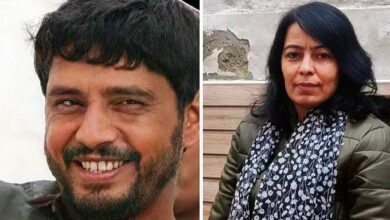Numberspeak | The First Party’s and the Second-Largest Party’s Vote Share Gap Has Widened Since 2004
As the nation prepares for the greatest celebration of democracy, the countdown to the Lok Sabha elections has officially started. An examination of historical data reveals that throughout the course of the previous four elections, there has been a steady widening of the gap between the leading and second parties—a constant contest between the Congress and the BJP.

The difference in the great old party’s vote share from the BJP in 2004, the year of the Congress’s victory, was just four percentage points, but by 2009, it had grown to ten. This margin was 12 percentage points in 2014, the year the BJP won the elections, and it rose to 18 points in 2019.
With the exception of 2019, the study indicated that parties have only garnered around 30% of the vote to win power. Additionally, the biggest party has consistently gained seats and a larger portion of the vote.
With 145 MPs and a 26.53 percent vote share in 2004, the Congress clearly needed the assistance of partners to win power. After gaining 206 seats in the subsequent general election, the party took 28.55 percent of the vote and won the majority. With 282 seats in 2014, the BJP had a 31.33 percent vote share. In 2019, the party gained 303 seats, increasing its vote percentage to 37.69 percent.
LOK SABHA: A NATIONAL PARTY GAME
In the Lok Sabha elections, national parties have garnered over 60% of the total votes cast. At least 63% of this was the case in 2004, rising to 64% in 2009 before declining to 61% in 2014. In 2019, national parties accounted for almost 69% of the votes cast. Furthermore, the Congress and BJP received a significant portion of these votes.
The combined vote percentage of the Congress and BJP was 57% in 2019, compared to 51% in 2014. Between 2004 and 2009, the combined vote share of the two parties was 49% and 47.35%, respectively.
The ongoing struggle of BSP
With the exception of the BJP and Congress, the Bahujan Samaj Party, headed by Mayawati, is the only party that has persisted in fighting despite consistently suffering significant defeats. The BSP fielded more candidates than either the Congress or the BJP did in the elections of 2004, 2009, and 2014.
The party ran candidates for 435 seats in 2004, which was more than the combined field sizes of the Congress and BJP. Despite 358 of its candidates losing their deposits, the BSP garnered 5.33 percent of the vote and won 19 seats.
In 2009, the BSP once again fielded the most candidates, more than the combined candidates of the Congress and BJP. This time, 410 contenders lost their deposits and 21 out of the 500 contestants were victorious. The party’s percentage of the vote rose to 6.17 percent.
The BSP had 503 candidates in 2014, but only one of them made it to the House. Additionally, 447 of them forfeited their deposits, resulting in the party’s 4.18 percent vote share.
Ten of the BSP’s 383 candidates for the House were elected in 2019, while 345 of them forfeited their deposits. The party’s percentage of the vote fell once again, reaching 3.66%.







